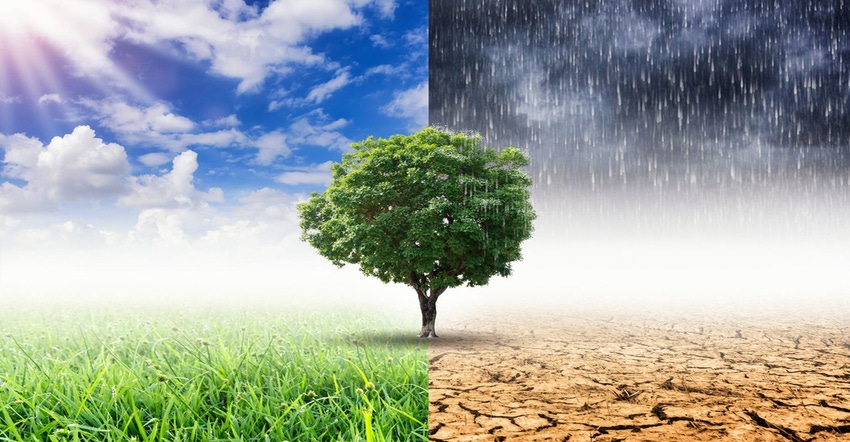
Every day new policy proposals or ideas continue to take shape on how to incentivize and encourage adoption of climate-smart agricultural practices. And the momentum continues to snowball for additional money and resources to help, but there’s also the fine line of ensuring actions don’t do more harm than good.
One major movement came this week in the Senate with the Senate Agriculture Committee offering unanimous consent for its Growing Climate Solutions Act, which has broad bipartisan support and 42 co-sponsors. Over 70 agricultural and environmental groups support the bill. Rep. Abigail Spanberger, D-Va., chair of the House Agriculture Committee’s Conservation and Forestry Subcommittee, and Don Bacon, R-Neb., introduced the bill in the House.
The Growing Climate Solutions Act would create a certification program at USDA to help solve technical entry barriers to farmer and forest landowner participation in carbon credit markets. It would include access to reliable information about markets, qualified technical service providers and protocol verifiers.
Related: Senators reintroduce bipartisan ag-focused climate bill
Lead author Senate Agriculture Committee Chairwoman Debbie Stabenow, D-Mich., says she’s optimistic the bill can find its way to the full Senate floor or in another legislative vehicle.
In related action, the Green New Deal was reintroduced in the House this week, as well as the many climate provisions lumped into the President’s American Jobs Plan infrastructure proposal.
World action
So as Congress begins in earnest to address climate change, the Biden administration also is making promises to world partners.
President Joe Biden joined world leaders from around the world in a virtual Leaders Summit on Climate Thursday and Friday to discuss the climate challenge and opportunity with a focus on mitigation and adaptation efforts. With the rejoining of the Paris Climate Accord, the United States also has committed to an aggressive carbon reduction target – achieving a 50-52% reduction from 2005 levels in economy-wide net greenhouse gas pollution by 2030.
“I see farmers deploying cutting-edge tools to make soil of our -- of our Heartland the next frontier in carbon innovation,” Biden said during his comments at the summit.
Ahead of the Leaders Summit on Climate, National Climate Adviser Gina McCarthy convened the third National Climate Task Force which also included Secretary of Agriculture Tom Vilsack and Secretary of the Interior Deb Haaland.
As part of the summit, Vilsack also said the United States is poised to reclaim its global leadership on the climate front and agriculture and forestry plays a pivotal role. He says part of those efforts will focus on enhancing climate smart agricultural practices, the development of biofuels, carbon capture and sequestration and better forest management and reforestation.
To help meet those goals, Vilsack announced that USDA will open enrollment in the Conservation Reserve Program with higher payment rates, new incentives, and a more targeted focus on the program’s role in climate change mitigation – devoting $300 million or more annually to the effort.
Related: USDA enhances CRP for climate mitigation
USDA also announced investments in partnerships to increase climate-smart agriculture, including $330 million in 85 Regional Conservation Partnership Program projects and $25 million for On-Farm Conservation Innovation Trials. The RCCP funds will leverage and attract an additional $400 million into these projects from private funding.
Vilsack notes it is important to “walk before we run” as USDA looks at how to encourage adoption of climate smart ag practices going forward.
We need to make sure that whatever we do in this space, we do intentionally and thoughtfully, and in a way that allows us to learn from experiences so that we can make adjustments, we can make modifications so that this works as well as possible comprehensively to address the goals that we've set for ourselves to reduce emissions and to ultimately take significant steps towards the president's ultimate goal of net zero emissions from agriculture by the year 2050,” Vilsack says.
“I think agriculture is ready for this. I think if we are thoughtful about it, and if we reassure folks this isn't going to jeopardize or compromise our ability to do many of the things we're currently doing with farmers and ranchers and producers rely on, that they will see that there's significant financial benefit to them, to agriculture.”
No land grab
Since the announcement of Biden’s 30x30 plan and utilizing 30% of the land for achieving emission reductions, many farmers fear an increased land grab by the government.
Vilsack tried to allay those concerns and say it isn’t about a land grab, but meeting targets by utilizing public lands and private working lands committed to conservation. USDA is in the process of hosting a series of outreach efforts and meetings with commodity groups and farmers to gather their input on how to structure efforts on climate and conservation.
“Over a period of time following that outreach, this will give us the ability to understand how best to structure this,” Vilsack says of the government approach.
“But I can assure you this: there's no intention to have a land grab. There's no intention to take something away from folks,” Vilsack promises. “It's really designed to figure out creative and innovative ways to encourage folks to participate in what I think many farmers and ranchers are already doing and may very well be inclined to do more if the right set of incentives are in place.”
About the Author(s)
You May Also Like






